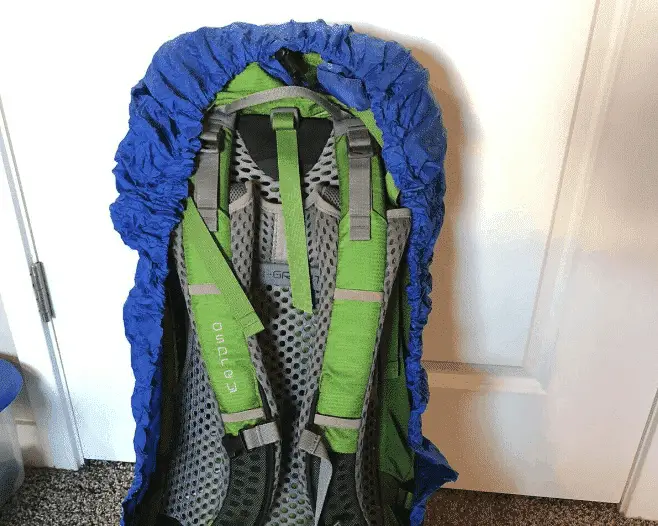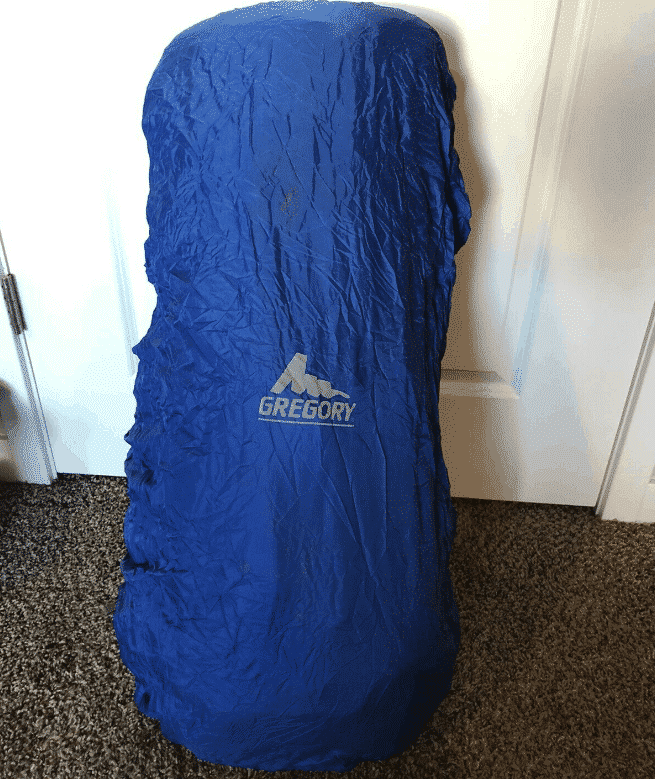Rain and nasty weather are inevitable in the backcountry, especially on longer trips. If you’re expecting rain you should seriously consider purchasing a backpack raincover.
Do I actually need a backpack raincover, or can you shed some weight and leave your raincover at home? Can I just use a pack liner instead? These are the questions that plague the minds of beginner backpackers.
As with everything in life, there’s no simple answer. Rain covers serve two simple purposes. They stop rain from leaking through the fabric in your pack and prevent your pack from getting ripped up in dense vegetation. Whether or not you actually want to carry a raincover is up to you.
Table Of Contents
Should I Use a Backpack Raincover?
If you’re planning an extended backpacking trip through the rainy season you should probably pick up a backpack rain cover.
For the price, you really can’t beat the usefulness of a rain cover. If your pack doesn’t include a rain cover you can pick one up fairly cheap. I really like the Granite Gear Rain Covers (On Amazon) and Osprey Rain Covers (On Amazon). There are lighter options out there (Z-Packs), but the added cost isn’t worth it for most people.
The Main Benefits of Backpack Rain Covers
Most packs have a thin water-resistant coating that really isn’t designed to withstand moisture. It might be able to withstand a light drizzle, but with serious rain, your gear will be soaked.
Backpack rain covers are made out of a waterproof membrane that creates a layer between your pack and outside moisture. The water beads up and runs off the back of your pack before it can soak into the top of your bag.
Rain covers definitely help, but you should still use a pack liner and dry sacks to further protect your gear. While they definitely help, water will eventually start to soak into your pack around the cover. On a short trip this probably won’t be a problem, but it’ll be bad over the course of a couple of days.
Rain Covers Only Protect The Front of Your Pack

Honestly, pack covers really aren’t all that effective in heavy rain. Since they only cover the front of your pack, rain will eventually start to run down your back and soak all your gear.
You’re going to experience leakage along the seams in the shoulder straps and hip belt. Before long all your gear will eventually get soaked. To truly keep your gear dry you need to use it alongside a pack liner.
Personally I use an Osprey Pack Liner (On Amazon), but everybody else I know uses a cheap compactor bag(just a cheap compactor bag). There’s no real advantage to using a dedicated pack liner over a compactor bag on short trips, but compactor bags will eventually tear (hope you brought duct tape).
Rain Covers Protect Your Outside Pockets From Rain
Think about where you store the most important items in your pack. They’re usually stored on the top or outside pockets of your pack. These are the two areas of your pack that are most susceptible to water damage (aren’t protected by pack liner).
Do I Need a Raincover With a Waterproof Backpack?
With a waterproof backpack, you really shouldn’t need a raincover. These packs are highly water-resistant right out of the box. They use waterproof fabrics and seam-tape so theoretically nothing will leak.
These packs are more or less waterproof at first, but they will eventually start to leak. Over time the seam-tape starts to peel and it will need to be replaced.
You might want a raincover if you’ll be storing your pack outside the tent overnight. Nobody wants to wake up, put on fresh clean clothes and then put on a soaking wet pack. It doesn’t even have to rain, morning dew will quickly soak your backpack.
They’re Lightweight and Easy to Pack
Rain covers are extremely light and easy to pack so there’s no reason not to carry one. They take up hardly any room in your pack and only weigh a few ounces.
While on the trail keep your rain cover somewhere you can quickly grab it. I always keep mine in a small pocket on the outside of my pack. When it starts to rain you should be able to put on the rain cover and all your rain gear fast.
A Simple Tip: Buy a Blaze Orange Raincover
Do yourself a favor and pick up a blaze orange rain cover. This is going to serve two major purposes. You’ll be much safer throughout the hunting season and easier to spot in case of an emergency.
Sizing Up Your Backpack Rain Cover
Rain covers obviously come in a wide variety of shapes and sizes to accommodate all the backpacks on the market. Your best bet is to contact your packs manufacturer and ask for recommendations.
Most companies have rain covers designed specifically for the packs in their lineup. They might cost a little bit more when compared to universal covers, but it will fit much better.
If you’re going with a universal rain cover get one that’s a little big for your pack. It’s gonna be much easier to put on and you can still lash some gear to the outside of your pack.




